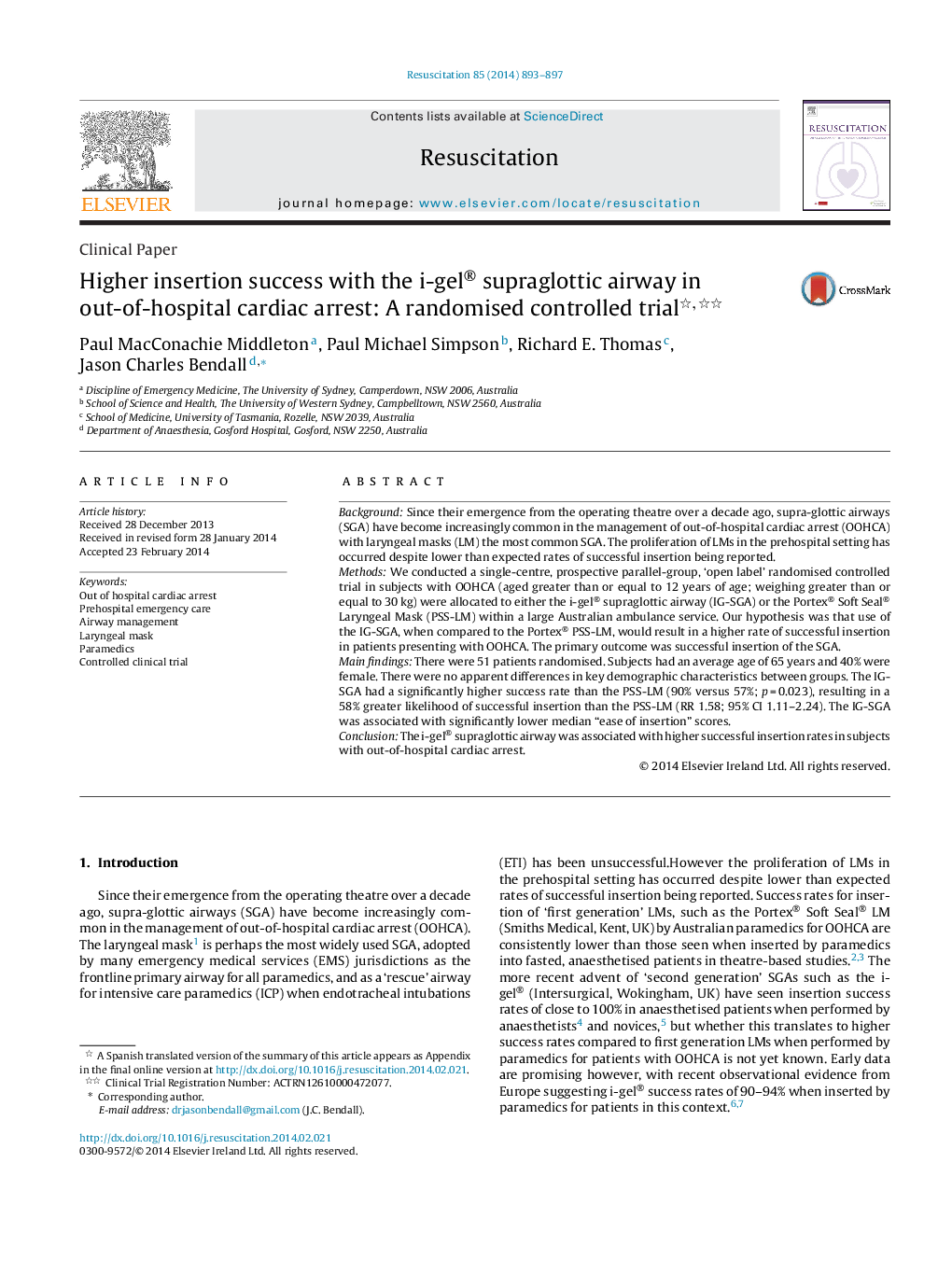| Article ID | Journal | Published Year | Pages | File Type |
|---|---|---|---|---|
| 5998464 | Resuscitation | 2014 | 5 Pages |
BackgroundSince their emergence from the operating theatre over a decade ago, supra-glottic airways (SGA) have become increasingly common in the management of out-of-hospital cardiac arrest (OOHCA) with laryngeal masks (LM) the most common SGA. The proliferation of LMs in the prehospital setting has occurred despite lower than expected rates of successful insertion being reported.MethodsWe conducted a single-centre, prospective parallel-group, 'open label' randomised controlled trial in subjects with OOHCA (aged greater than or equal to 12 years of age; weighing greater than or equal to 30 kg) were allocated to either the i-gel® supraglottic airway (IG-SGA) or the Portex® Soft Seal® Laryngeal Mask (PSS-LM) within a large Australian ambulance service. Our hypothesis was that use of the IG-SGA, when compared to the Portex® PSS-LM, would result in a higher rate of successful insertion in patients presenting with OOHCA. The primary outcome was successful insertion of the SGA.Main findingsThere were 51 patients randomised. Subjects had an average age of 65 years and 40% were female. There were no apparent differences in key demographic characteristics between groups. The IG-SGA had a significantly higher success rate than the PSS-LM (90% versus 57%; p = 0.023), resulting in a 58% greater likelihood of successful insertion than the PSS-LM (RR 1.58; 95% CI 1.11-2.24). The IG-SGA was associated with significantly lower median “ease of insertion” scores.ConclusionThe i-gel® supraglottic airway was associated with higher successful insertion rates in subjects with out-of-hospital cardiac arrest.
